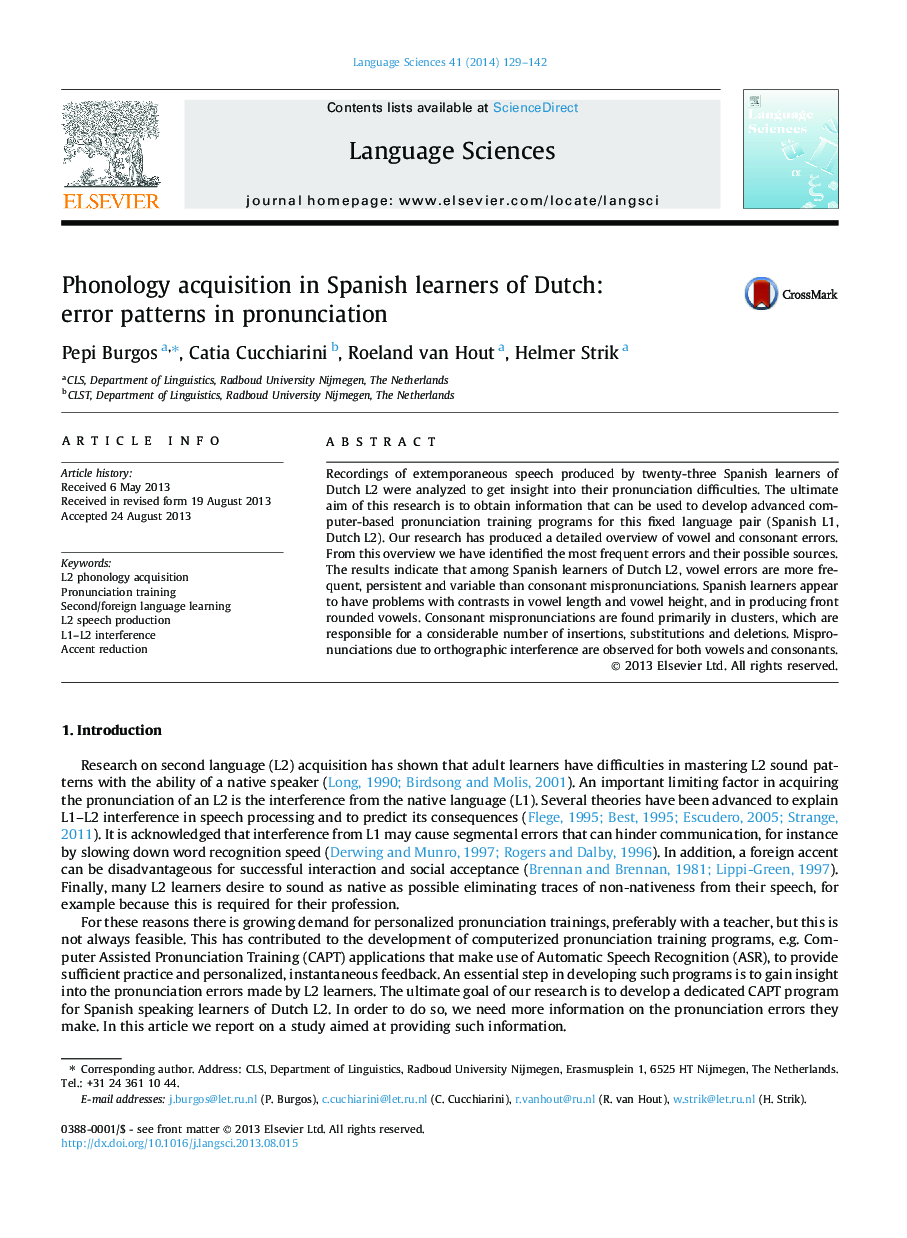| Article ID | Journal | Published Year | Pages | File Type |
|---|---|---|---|---|
| 1103148 | Language Sciences | 2014 | 14 Pages |
•A data-driven study of pronunciation errors by Spanish learners of Dutch.•Orthography interference is observed in both vowel and consonant production.•Vowel errors are more frequent and persistent than consonant errors.•Vowel production errors are in line with current models of L2 vowel perception.•Consonant mispronunciations are found primarily in onset and coda clusters.
Recordings of extemporaneous speech produced by twenty-three Spanish learners of Dutch L2 were analyzed to get insight into their pronunciation difficulties. The ultimate aim of this research is to obtain information that can be used to develop advanced computer-based pronunciation training programs for this fixed language pair (Spanish L1, Dutch L2). Our research has produced a detailed overview of vowel and consonant errors. From this overview we have identified the most frequent errors and their possible sources. The results indicate that among Spanish learners of Dutch L2, vowel errors are more frequent, persistent and variable than consonant mispronunciations. Spanish learners appear to have problems with contrasts in vowel length and vowel height, and in producing front rounded vowels. Consonant mispronunciations are found primarily in clusters, which are responsible for a considerable number of insertions, substitutions and deletions. Mispronunciations due to orthographic interference are observed for both vowels and consonants.
